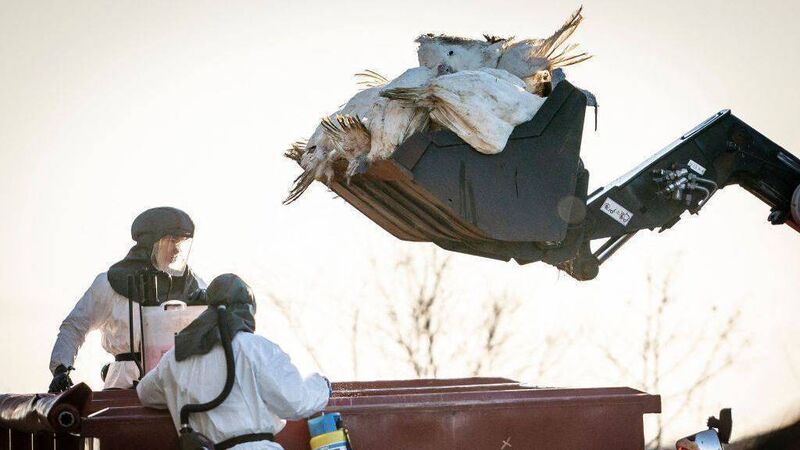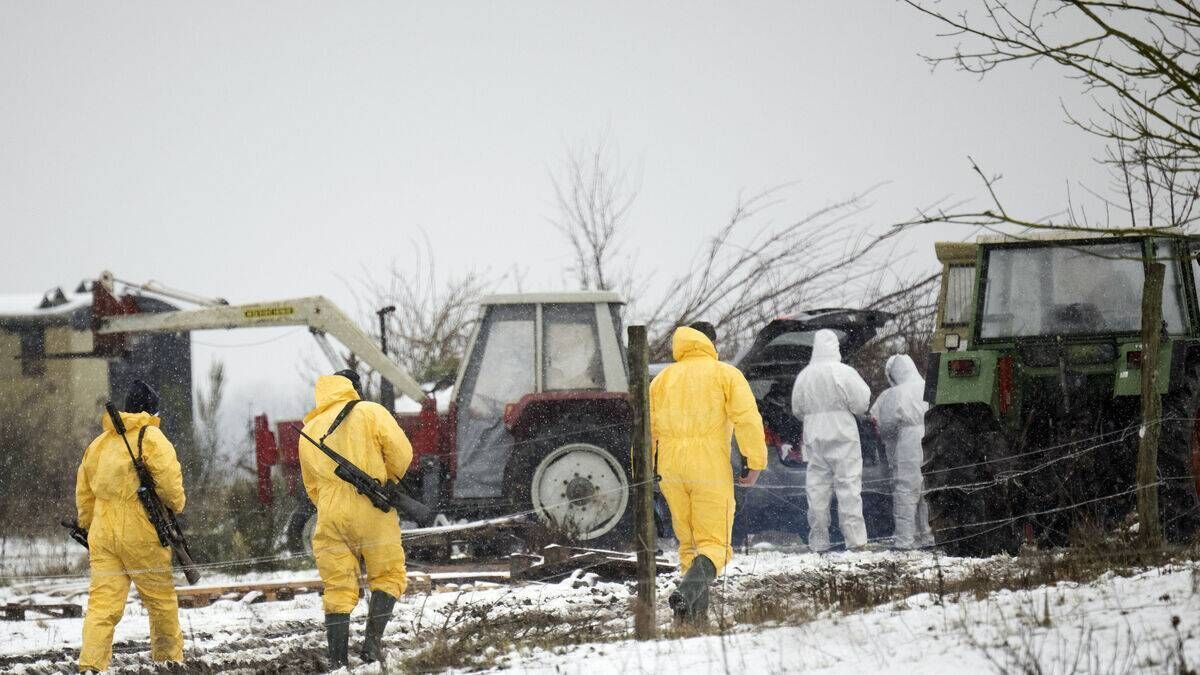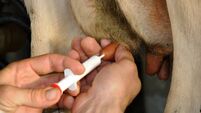The frightening breakdown of animal health across Europe's farms

Poland had reported 85 HPAI outbreaks in poultry this year. In 2024, 50 HPAI outbreaks in farmed poultry were confirmed.
A huge bird flu epidemic in the EU's main poultry meat-producing member state is part of a scary breakdown of animal health on European farms.
Poland produces 21% of the EU's poultry meat, but Highly Pathogenic Avian Influenza (HPAI) has left it struggling to rebuild its poultry stocks.
Along with bird flu, over the past decade, outbreaks of African swine fever, bluetongue virus, foot-and-mouth disease, ovine rinderpest, and lumpy skin disease have followed one after the other in the EU, with livestock losses, financial cost, reduced food production, and trauma for farmers.
Poland's poultry industry developed rapidly since 2004, when Poland joined the EU. Flocks have also been hit by Newcastle disease, for which vaccination has been made mandatory.
Poland's annual poultry production of 2.9 million tonnes comes from about 67% broiler chickens, 22% laying hens, 7% turkeys, 3% ducks, and 1% geese.
Polish producers have been able to export broiler meat cheaper than other member states. The EU accounts for around 60% of Polish broiler meat exports, with 40% directed to non-EU countries. Poultry meat production increased by about 6.5% in 2024, a trend which continued into 2025, but the bird flu and Newcastle disease has now affected expansion.
By May 6, Poland had reported 85 HPAI outbreaks in poultry this year. In 2024, 50 HPAI outbreaks in farmed poultry were confirmed.

The Mazowieckie and Wielkopolskie provinces have the largest poultry population in Poland, accounting for 22 and 23%, respectively. In 2025, most of the outbreaks (43) were in Wielkopolskie province, followed by Mazowieckie (21).
The 2025 outbreaks led to the culling of 7.7 million birds on the infected farms, and an additional four million poultry in 65 in-contact farms.
Although most of the HPAI outbreaks were reported on 29 slaughter turkey farms, egg production was the worst impacted part of the industry, with laying hens making up 48% of all culled birds. Five outbreaks were confirmed on broiler farms, with 1.2 million birds culled. But even more significant were 12 outbreaks on hen reproductive farms, where over 865,000 birds were culled. Such a big loss of reproductive hens poses a threat to the Polish potential to rebuild poultry stocks.
Previously, HPAI detections decreased in the spring and summer, but the winter infection peak has been prolonged in Poland this year, with the highest HPAI outbreak numbers recorded in March. As a result, at the beginning of April, the European Commission informed the Polish Chief Veterinary Officer of its deep concern at the disease situation.
It said Polish measures to limit the bird flu epidemic were insufficient, which threatened the intra-EU market.
EU measures were threatened against Poland, such as banning restocking with new birds by commercial poultry farms in four provinces, including Wielkopolskie and Mazowieckie, and restricting the movement of poultry, except to slaughterhouses. The four provinces have 64% of Poland’s poultry production.
Instead, negotiations resulted in an agreed action plan, in co-operation with the leading poultry industry associations and poultry and egg producers. Thirteen key directions were jointly agreed upon. For example, farms where outbreaks occur must break production for 40 days after a final disinfection, with restocking subject to inspection and verification of cleanliness tests, confirming the absence of HPAI and Newcastle disease.
Other poultry farmers must wait 14 days before restocking, which is subject to additional official disinfection control. Stocking density limits will also be imposed.
Surveillance zones around outbreaks are expanded by an additional five kilometres.
No farmer compensation will be awarded without adherence to biosecurity plans verified by veterinarians. Weekly monitoring is to be introduced in restricted areas. Employees will be allowed work on only one farm.
These and other agreed measures were implemented immediately in the worst-affected areas in Poland since mid-April.
Meanwhile, there were 24 outbreaks of Newcastle disease (ND) on commercial poultry farms in Poland up to May 6, leading to culling of more than two million birds. In 2024, 21 ND outbreaks were confirmed.
Since April 29, extra ND biosecurity requirements, and the obligation to vaccinate chickens and turkeys kept on commercial farms and poultry hatcheries, have been imposed. For example, commercial farms must apply enhanced biosecurity measures, such as disinfection when entering and leaving poultry buildings and farms.
With rising meat prices and falling feed costs, Polish poultry farmers were set for another year of expansion, but disease has brought the booming sector down to earth suddenly.
It is becoming an all-too-familiar setback for EU farmers, including cattle and sheep farmers hit by last year’s outbreak of a new strain of bluetongue virus.
This year, African Swine Fever (ASF) is also in the rise again, with Estonia, Croatia, and Ukraine reporting fresh outbreaks, and outbreaks continuing in 13 other member states.
Germany, Hungary and Slovakia have been hit by this century's worst EU outbreak of foot-and-mouth disease (FMD), and an exotic viral strain of the same disease in Iraq and other countries in the Near East adds to the threat.
Hungary has also been hit (for the first time ever) by ovine rinderpest, also commonly known as peste des petits ruminants (PPR). Causing severe mortality rates, PPR frequently devastates areas of Africa, the Middle East, and Asia, where farmers depend heavily on small ruminants.
Since 2012, lumpy skin disease spread from Africa and Asia into cattle herds in Greece and Bulgaria. Its spread was controlled by a large, co-ordinated vaccination campaign co-funded by the EU.
Vaccination is the answer to the EU's rising livestock disease problem, according to Emmanuelle Soubeyran, director general of the Paris-based World Organisation for Animal Health. However, the EU resists wider use of vaccination, because of the expense involved, and because countries the EU exports to may refuse to import meat and dairy products from vaccinated herds.
Slovakia has used emergency FMD vaccines, but Germany and Hungary opted for animal lockdowns and epidemiological tracing.
France adopted mass vaccination of ducks after 2023 bird flu outbreaks, and has successfully restored poultry production to its highest level in years. The Netherlands may launch vaccination for egg-laying flocks. Vaccination is unlikely in the USA, struggling to contain a massive bird flu epidemic.


